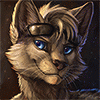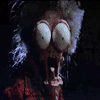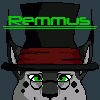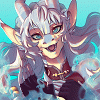
Updated version for Kasar's model sheet commission.
Bigger version is here:
http://us.vclart.net/vcl/Artists/J-.....asar3-fixs.jpg
This time I add his weapons.
You guys know I can't draw weapons,
so basically I just copy them from the ref photos that Kasar gave me.
I still don't get it why he wants to pay me for doing this. = ="
Character © The commissioner
Artwork © J.C.
Please do not use/repost/edit/re-draw without my permission, thank you!
Bigger version is here:
http://us.vclart.net/vcl/Artists/J-.....asar3-fixs.jpg
This time I add his weapons.
You guys know I can't draw weapons,
so basically I just copy them from the ref photos that Kasar gave me.
I still don't get it why he wants to pay me for doing this. = ="
Character © The commissioner
Artwork © J.C.
Please do not use/repost/edit/re-draw without my permission, thank you!
Category Artwork (Digital) / General Furry Art
Species Wolf
Size 626 x 1280px
File Size 117.3 kB
Listed in Folders
the point of this "exercise" is to allow others who draw the character to do so in a standard way (The definition of "Model sheet") it is not enough information. The difference is in *Motion* If you're going to take this character (or any character for that matter) and animate them (cause them to present the continuous illusion of smooth and realistic motion) Information is sorely lacking. That is what the four pose turn is for. It presents proportion, structure and overall views, with which anyone with a mere modicum of drafting and animation skill can extrapolate what the character in question would present while in motion.
This artwork is a "cheat", albeit an artful one. What you have here is a combination of "colour key" and presentation artwork. Neither of which is suitable for animation. That is why I advocate moving the weapons (incidentals) to their own sheets. If they are to move, or to be shown in motion(use) they too must be standardized and kept in proper location, perspective, and proportion. in this aspect, as a "model sheet" there is not enough information presented.
As to being useful for static artwork in general, I have my doubts there is well. This covers the last of the points I raised. Character Expressions.
A well done set of model sheets also work to convey to the layout people and the animators a sense of essential character that may (or most often may not) be reflected in the pages from the storyboard(s) from which they might be working. (It depends what is in the scene handout given them by the director or the head of animation.) Looking at this sheet, I have only the smallest sense of any unique (or often used) expression which the character might possess. I have, therefor, very little idea (based on what is presented alone) about the character himself. There is not enough technical information to be suitable to bring the Character to life (Motion) nor is there enough character information to entice one to bring him to life in a drawing or story. So, in sacrificing both technical information and character studies, you fall short, somewhere in the middle of both.
My point overall is this: You're doing all this work already (altho it isn't really a lot of work) why not go the extra ten meters after you've walked 990 meters already? If you're goal is to present a standardized reference for other artists, why not achieve the greatest degree of information presentation possible?
This artwork is a "cheat", albeit an artful one. What you have here is a combination of "colour key" and presentation artwork. Neither of which is suitable for animation. That is why I advocate moving the weapons (incidentals) to their own sheets. If they are to move, or to be shown in motion(use) they too must be standardized and kept in proper location, perspective, and proportion. in this aspect, as a "model sheet" there is not enough information presented.
As to being useful for static artwork in general, I have my doubts there is well. This covers the last of the points I raised. Character Expressions.
A well done set of model sheets also work to convey to the layout people and the animators a sense of essential character that may (or most often may not) be reflected in the pages from the storyboard(s) from which they might be working. (It depends what is in the scene handout given them by the director or the head of animation.) Looking at this sheet, I have only the smallest sense of any unique (or often used) expression which the character might possess. I have, therefor, very little idea (based on what is presented alone) about the character himself. There is not enough technical information to be suitable to bring the Character to life (Motion) nor is there enough character information to entice one to bring him to life in a drawing or story. So, in sacrificing both technical information and character studies, you fall short, somewhere in the middle of both.
My point overall is this: You're doing all this work already (altho it isn't really a lot of work) why not go the extra ten meters after you've walked 990 meters already? If you're goal is to present a standardized reference for other artists, why not achieve the greatest degree of information presentation possible?
The example you give is closer to what I would consider usable as a character model. More visible anatomy, along with more character. As far as it working "fine" for static artwork, I wouldn't go quite that far either.
Sheets like this have two purposes:
To present the character in question in a standard way, such that any artist, in spite of stylistic differences may draw the presented character in the same standard manner.
To present sufficient character expressions, such as will permit the overall working of the head and face and at the same time, present some seed of the essential personality of the character being presented. Both of these points operate under the general assumption that someone who uses these materials may never have heard (read, seen) the character before seeing these sheets.
The classic four pose turn is not only for presentation purposes, it also helps establish and hold both proportion thruout the figure, and a consistency in fine details (like fur and hair, as well as accessories) from whatever angle or perspective from which they might wish to be drawn.
As to your belly ache about doing four pose turns, and the like, as an Animator, I have done them and so much more over nearly 45 years!
And just as an adjunct rejoinder to your crying in your pablum, I have never asked that anyone do work for free which they have not volunteered to do, and on top of everything else, Mate, it wouldn't be you who'd I ask if I had a choice to make anyhow!
Sheets like this have two purposes:
To present the character in question in a standard way, such that any artist, in spite of stylistic differences may draw the presented character in the same standard manner.
To present sufficient character expressions, such as will permit the overall working of the head and face and at the same time, present some seed of the essential personality of the character being presented. Both of these points operate under the general assumption that someone who uses these materials may never have heard (read, seen) the character before seeing these sheets.
The classic four pose turn is not only for presentation purposes, it also helps establish and hold both proportion thruout the figure, and a consistency in fine details (like fur and hair, as well as accessories) from whatever angle or perspective from which they might wish to be drawn.
As to your belly ache about doing four pose turns, and the like, as an Animator, I have done them and so much more over nearly 45 years!
And just as an adjunct rejoinder to your crying in your pablum, I have never asked that anyone do work for free which they have not volunteered to do, and on top of everything else, Mate, it wouldn't be you who'd I ask if I had a choice to make anyhow!

 FA+
FA+
















Comments